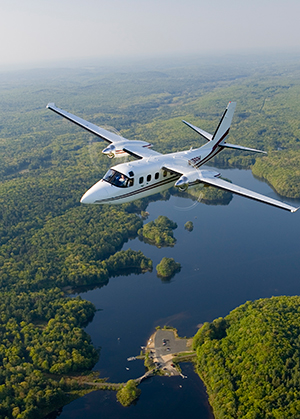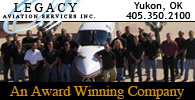Recommended Climb/Cruise Power Settings
for TPE331 Engines


By Helmuth Eggeling
One often-discussed aspect of operating a Honeywell-powered Twin Commander is RPM setting, both in climb and cruise. Must you climb to cruise altitude at 100 percent, or is it okay to reduce RPM in the climb? What is the optimum RPM setting for cruise power? These and other questions will be answered in a two-part series. This first article focuses on TPE331-10-series engines equipped with the SRL (single red line) feature. The next issue of Flight Levels will look at recommended RPM settings for non-SRL engines.
The first thing that must be said is that Honeywell recommends that normal climb and cruise power be set in accordance with the appropriate Aircraft Flight Manual and the FAA/JAA approved Standard Operating Procedures, which have been established for your flight operations.
Second, it’s required that all takeoffs and landings must be made at 100 percent RPM. Typically, however, the RPM should be reduced to 97 percent for all normal climb and cruise operations. This would result in the commensurate reduction in TIT. Remember, at a specific indicated EGT, the actual temperature seen at TIT is approximately 35 to 50 degrees Celsius cooler at 97 percent RPM as compared to 100 percent RPM! This change occurs due to the SRL re-calculating the TIT/EGT relationship above and below about 98 percent RPM.
Prior to reducing RPM to the climb or cruise values, however, a reduction in indicated turbine temperature of at least 50 degrees Celsius is recommended to avoid exceeding the EGT limits or inadvertently “bumping” the TL. After 97 percent RPM has been set, EGT may be reset to the original value.
While the availability of maximum thermodynamic engine power may be desirable for takeoff and final approach/landing, continuous operation at a more conservative power level will yield a better balance in engine costs and in-service reliability.
Should abnormal conditions (single-engine operations, obstacle clearance requirements, icing, ATC issues, etc.) require more power at some point during flight, the higher power available at 100 percent RPM and not to exceed 650 degrees EGT and/or 100 percent torque, may be utilized at the pilot’s discretion. However, it is recommended that as soon as the abnormal conditions no longer exist, power should be reduced to the recommended continuous power settings.
A brief technical explanation:
Turbine wheel and blade wear is directly related to turbine temperature and RPM. The hottest gas that makes physical contact with the turbine section is in the TIT (T4) area. For that reason, temperature should be monitored at T4. However, it is impractical to measure TIT directly due to the extremely high temperatures, inaccessibility of the temperature probe, and other thermodynamic considerations. One solution is to monitor EGT, which can be measured in a more “moderate” environment.
The problem with indicating EGT as opposed to TIT is that the temperature drop between TIT and EGT (also referred to ∆ T) is not constant. In fact, ∆T is depending upon mass-flow variations, which are affected by RPM, true airspeed, pressure altitude, OAT, and alcohol and water injection. (Some TPE331 airframe applications employ an alcohol and water injection system, but not on Commanders.)
The SRL computer solves the complexity of calculating ∆T by applying a mathematical correction to EGTCOMP (measured EGT plus a compensation value) utilizing look-up tables for each variable. The result is a numeric value that indicates a constant EGT at a constant TIT, regardless of mass-flow variations. More importantly, with a normally functioning SRL, 650° C EGTIND represents maximum certified TIT.
As mentioned above, turbine wheel and blade wear is also affected by RPM. This is due to centrifugal forces, which cause the turbine wheel to expand and the turbine blades to stretch. The higher the RPM the larger the expansion and stretch will be, especially during high TIT conditions. Hence the recommendation to use 96-97 percent RPM for continuous operations like climb and cruise.
Finally, compressors and propellers have been optimized for a specific RPM. In the case of Dash 10-powered aircraft, compressors have been optimized for 97 percent RPM when operating at high TAS and at high altitudes. In other words, as the aircraft climbs and TAS increases, the compressor efficiency drops off more quickly at 100 percent RPM than at 97 percent RPM.
For more information on this and other TPE331 operational issues, contact Capt. Helmuth Eggeling, Pilot Advisor, Honeywell Aerospace Flight Test Operations in Phoenix, Arizona, at (602) 231-2697, mobile (602) 363-9316, fax (602) 231-2380; or e-mail [email protected].
Discuss this article in the forums...






